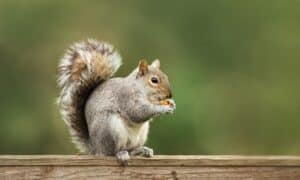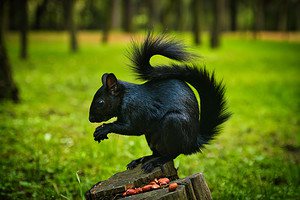A unique type of rodent with winglike features, the flying squirrel loves to eat. What are some of its favorite foods, despite its small size and adorable features?
What do flying squirrels eat? Flying squirrels eat insects, fruit, seeds, and nuts.
But are there even more things that this rodent has been known to eat? And what types of predators do flying squirrels need to watch out for as they forage? Let’s learn all about this animal now.
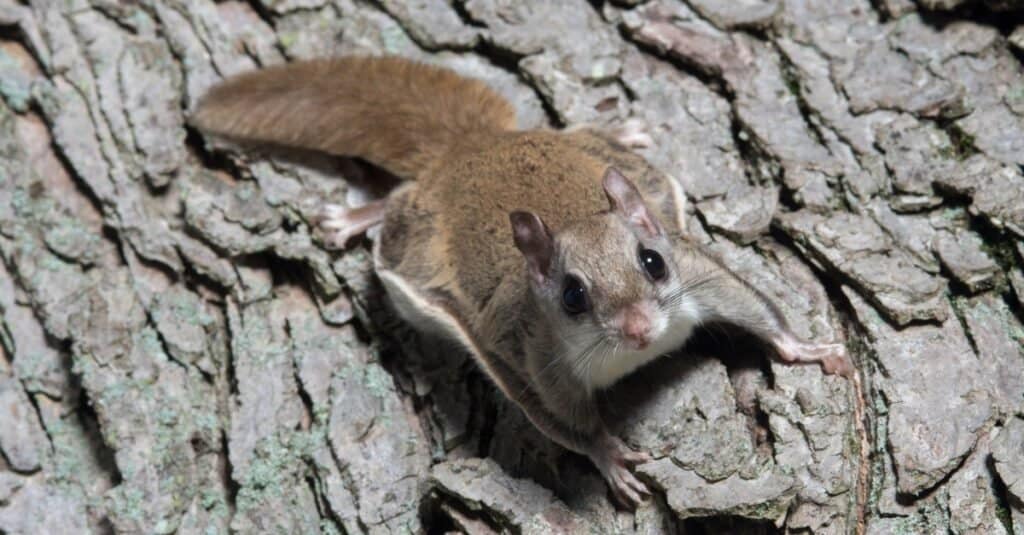
Some types of flying squirrels are more carnivorous than others and they have more protein in their diets.
©iStock.com/EEI_Tony
What Does a Flying Squirrel Eat?
A flying squirrel eats bugs, seeds, fruit, nuts, fungi, and more. Primarily omnivores, they can survive off of lichen and sap during leaner months in their local environments as well.
Some types of this particular squirrel are more carnivorous than others, and their diets are adapted to eat more protein-rich foods. This can include bird eggs and even other small rodents such as moles.
According to the Northwestern Naturalist, some squirrels may even eat better than most of us: they have a penchant for consuming truffles in the Pacific Northwest! These voracious eaters aren’t shy about consuming a wide variety of things.
A Complete List of 13 Foods Flying Squirrels Eat
Flying squirrels have been known to eat the following foods:
- Seeds
- Nuts
- Pinecones
- Mushrooms
- Acorns
- Truffles
- Various plant matter
- Lichen
- Fruit
- Eggs
- Small birds
- Small rodents
- Decaying animals.
It may surprise you to hear that some species of squirrel eat more meat than others, including the meat of other types of rodents. Flying squirrels are hoarders and scavengers, capable of consuming decaying animals as well as live ones.
According to The American Midland Naturalist, flying squirrels have a relatively low metabolic rate compared to other types of squirrels, and have been known to survive on a diet of acorns alone.
However, depending on the specific species and the region in which the flying squirrel is living, their diet can drastically differ. While fruiting trees and trees with nuts or seeds are a squirrel’s favorite, some flying squirrels resort to eating bird eggs right from the nest.
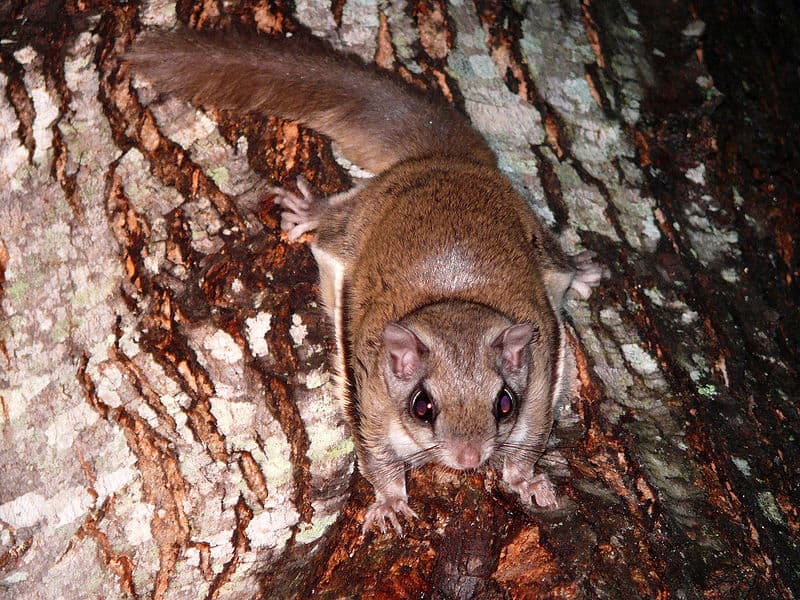
Flying squirrels are scavengers who eat decaying animals as well as live ones.
©Ken Thomas – Public Domain
How Much Does a Flying Squirrel Eat?
A flying squirrel eats 0.4-1 ounces or 10-30 grams of food daily, depending on the species and types of food available. Wild flying squirrels often need to eat more than pet squirrels, as they are on the move far more often.
However, wild flying squirrels often have more limited resources. This is one of the main reasons why this animal hoards food, especially in preparation for the winter. That’s one thing to know about flying squirrels: they are master foragers and hoarders!
The American Midland Naturalist mentions that flying squirrels have been observed eating acorns the moment they find them, but stashing away hickory nuts to eat during cold winter months. They are truly capable of maximizing their seasonal resources.
It is important to feed your flying squirrel closer to 0.4 ounces or 10 grams of food per day should you have one as a pet. Their diet should be varied, much like the diet of wild flying squirrels. But more on that later!
Do Flying Squirrels Have Any Predators?
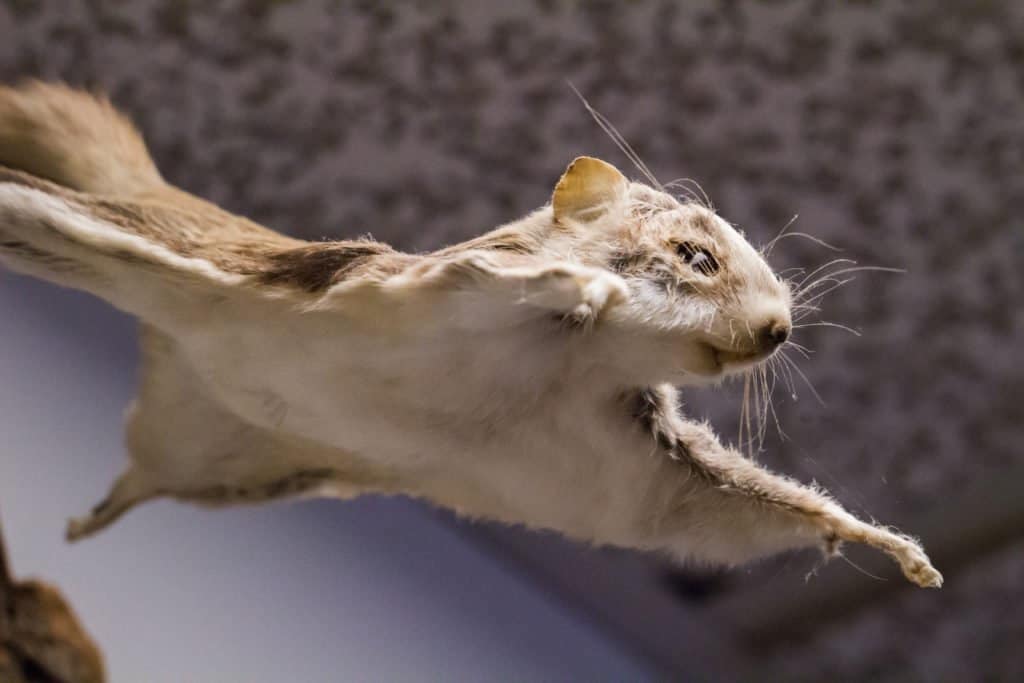
A flying squirrel eats 0.4 to 1 ounce or 10-30 grams of food daily, depending on the species and types of food available.
©Laura Fiorillo/Shutterstock.com
Flying squirrels have many predators, including the following:
Given their small stature and status as a rodent, flying squirrels are no doubt victims to many predators. However, their ability to glide away, as far as 164 feet or 50 meters, can help them avoid getting eaten!
It is important to note that flying squirrels can’t actually fly. They don’t have any wings to flap, but they can glide from branch to branch using their connective skin folds. It stretches from their front legs to their hind legs, and allows flying squirrels to perform feats that only look like flying.
Humans are also considered a predator of the flying squirrel, but not for eating. Humankind is responsible for destroying many flying squirrel’s natural habitats, and potentially harming them in the process of bringing them to exotic pet stores.
What to Feed Flying Squirrels as a Pet
You can feed flying squirrel pets the same things that wild flying squirrels eat. You can also consider feeding them the following treats:
- Pecans
- Sunflower seeds
- Bird seed blends
- Mealworms
- Fresh vegetables
- Fresh fruit
- Butternut squash
- Pine nuts.
Given that flying squirrels love to hoard their food and forage for it, you can treat your flying squirrel to some special hiding spots. Find clean and dry locations throughout your flying squirrel enclosure and hide various nuts and seeds there.
Depending on the species of flying squirrel, you could even feed it small pieces of chicken or high quality cat food. These are not picky eaters, which is why you should make sure not to overfeed them.
What Do Babies of Flying Squirrels Eat?
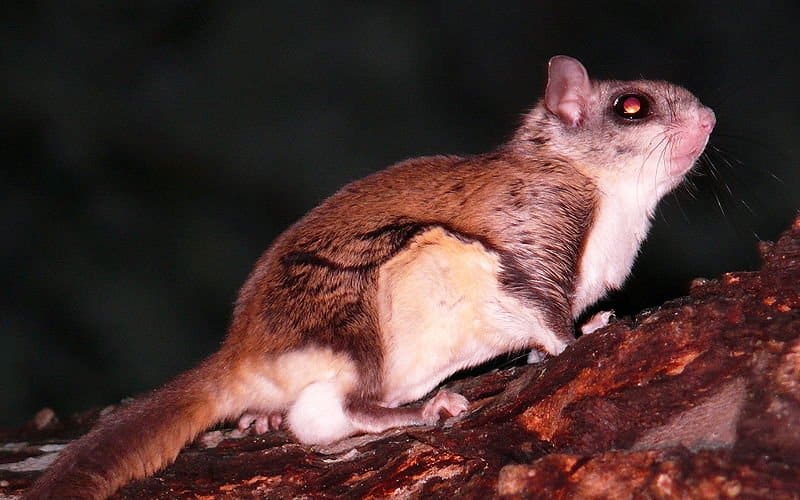
Flying squirrels are master foragers and hoarders!
©Ken Thomas – Public Domain
Flying squirrel babies eat milk until they are 5 weeks old. After that, they are free to have any foraged food, including hard nuts and seeds. In fact, baby flying squirrels need to eat solid food in order to keep their teeth filed down!
Should you ever come across an abandoned baby flying squirrel, you should try to feed it dog or cat milk substitutes, such as Esbilac. This is a standard puppy milk replacement formula, and many baby squirrels can handle its contents.
Make sure to warm the milk thoroughly, and many baby flying squirrels prefer to be warm in their enclosure too. It is always better to underfeed than overfeed a baby flying squirrel, as they are prone to bloating.
However, most baby squirrels live best on their mother’s milk, not a formula substitute- there are many enzymes that they can get naturally. Once they are four or five weeks old, they are free to do as they please — and eat as many acorns as they want!
Summary of What Foods Flying Squirrels Eat
Here’s a recap of the foods that flying squirrels in the wild consume.
| Number | Food |
|---|---|
| 1 | Seeds |
| 2 | Nuts |
| 3 | Pinecones |
| 4 | Mushrooms |
| 5 | Acorns |
| 6 | Truffles |
| 7 | Various plant matter |
| 8 | Lichen |
| 9 | Fruit |
| 10 | Eggs |
| 11 | Small birds |
| 12 | Small rodents |
| 13 | Decaying animals |
Flying squirrels in captivity can be fed the following foods.
| Number | Food |
|---|---|
| 1 | Pecans |
| 2 | Sunflower seeds |
| 3 | Bird seed blends |
| 4 | Mealworms |
| 5 | Fresh vegetables |
| 6 | Fresh fruit |
| 7 | Butternut squash |
| 8 | Pine nuts |
The photo featured at the top of this post is © iStock.com/EEI_Tony
Thank you for reading! Have some feedback for us? Contact the AZ Animals editorial team.




